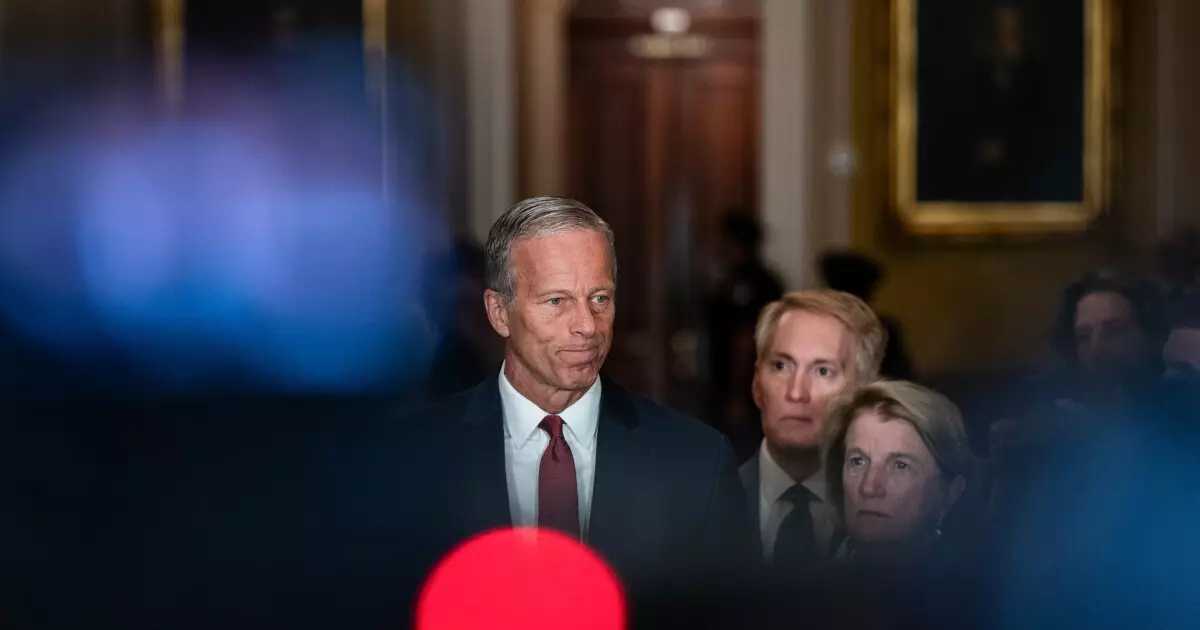The current efforts by Senate Republicans to address the dire situation facing rural hospitals with a $15 billion relief fund present a mixed bag. On one hand, this initiative seems like an essential acknowledgment of the financial realities plaguing many medical facilities in rural areas; on the other hand, it manifests a troubling pattern of temporary fixes instead of a genuine commitment to long-term healthcare reform. The “one big beautiful bill” touted by GOP senators shines a light on the ongoing tensions between fiscal conservatism and essential healthcare needs—two values that, while sometimes aligned, often exist at odds in political discourse.
The proposed relief fund, intended to alleviate cuts in Medicaid, reflects a reactive approach that raises questions about the underlying motivations of the Senate. For states like Kentucky, North Carolina, and Oklahoma—where the cuts could reach devastating heights—it seems disingenuous to claim the welfare of rural healthcare facilities is being prioritized when the bordering reality is one of cuts and financial strain. The proposed mechanism for distributing these funds brings its own concerns, centering on a formula that takes into account the rural population and the prevalence of healthcare facilities. This brings a question to the forefront: will the funding truly meet the immediate needs, or will it simply circle the bureaucratic drain?
Bypassing Political Roadblocks
Senate Majority Leader John Thune’s insistence on not overriding the Parliamentarian’s ruling indicates a troubling complacency. By treating the ruling as merely a “speed bump,” Thune encapsulates a level of political triage that devalues the urgency of the healthcare crisis. To characterize the Parliamentarian’s assessment as a minor hurdle is to ignore the broader implications of their rulings on legislative integrity. The Byrd Rule itself exists for a reason; it aims to ensure that significant decisions do not slip through the cracks of partisanship and political expediency, thus calling into question the true priorities of those crafting the legislation.
Furthermore, the math behind meeting the ambitious July 4 deadline underscores a surface-level commitment to addressing healthcare needs in a comprehensive fashion. Legislative deadlines often serve as political theatre, and one has to wonder if the pressure to finalize a bill is hindering thoughtful debate. It’s apparent that rushed legislation could result in patched-together solutions that masquerade as comprehensive reform while in reality, barely skim the surface of the issues at hand.
The Financial Implications for Rural Hospitals
The reality is stark: nearly half of rural hospitals operated at a financial loss in 2023. This idiosyncratic statistic stands as a testament to the flawed structure of rural healthcare funding. With the impending cuts to Medicaid now on the table, the overall health of rural medical institutions remains precarious. The proposed changes would not just impede access to care; they could essentially cripple these hospitals.
Compounding the situation is a growing anxiety in the municipal bond market regarding the long-term viability of rural healthcare. Markets respond to perceived risk, and as the S&P Municipal Bond Hospital Index climbs steadily amid rising yields, it suggests a hesitant investor confidence. This could push some investors away at a time when innovative financing solutions are desperately needed. Concerns over Medicaid cuts that jeopardize financial stability may result in a self-fulfilling prophecy. In an era where healthcare is a critical talking point, the failure to ensure sustainable funding for these essential services could erode any semblance of progress.
A Call for Genuine Reform
While the $15 billion relief fund may seem like a bandage to a gaping wound, it is imperative that policy-makers approach healthcare challenges with a focus on sustainability rather than transient fixes. A systemic focus on reform, which addresses the funding issues at their core, is essential to securing the future of rural healthcare. It is not enough to simply pull funds from one place and redistribute them without questioning the structure that led to these issues in the first place.
A true commitment to rural healthcare must involve engaging with the unique circumstances and challenges these communities face daily. State-specific strategies, alongside a comprehensive federal approach, can pave the way toward genuine reform—one that is focused on not just alleviating current pains but fostering resilience and adaptability in an evolving healthcare landscape. As the Senate pushes forward, it’s crucial that lawmakers leap beyond superficial solutions and embrace the complexity of healthcare needs in rural America. Only then can we build a system that upholds the dignity of medical care for all citizens, regardless of their zipcode.

